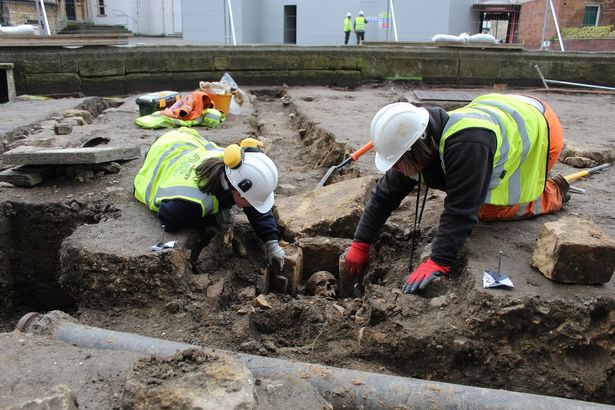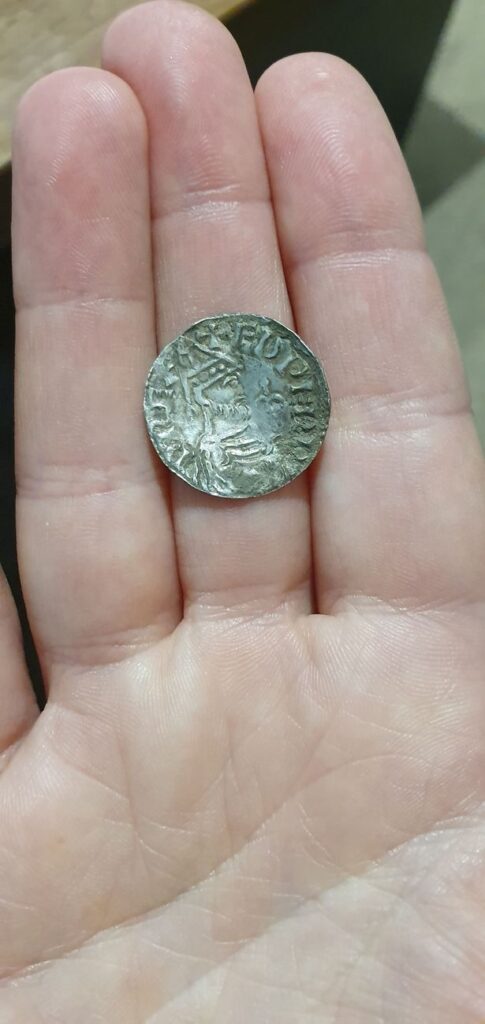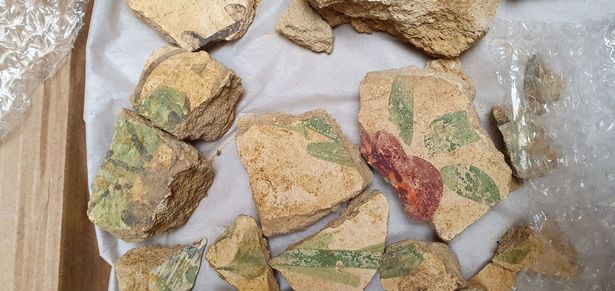Medieval Priest’s Remains Unearthed in England
Over 50 burials unearthed by archaeologists in the Lincoln Cathedral included a remarkable medieval priest burial.
A skeleton is believed to be that of a medieval priest found, who had been buried in the area that is now the building’s West Parvis.
The priest had been carefully buried with a pewter chalice and paten, used during communion and key symbols of the work of the priest. Similar examples have been dated to as far back as the 12th and 13th centuries.
His burial is just one of more than 50 found immediately around the cathedral; from the West Front at the main entrance to the Dean’s Green to the north.
The burials were found during excavations by Lincoln-based Allen Archaeology Ltd as part of the National Lottery-funded Lincoln Cathedral Connected project. The excavations were to enable drainage works and landscaping around the cathedral.
The area between the West Front of the Cathedral and the neighboring Exchequergate Arch is known to have been used as a burial ground for the cathedral and the church of St Mary Magdalene in the Bailgate. Part of the area of the Dean’s Green was also used as a burial ground for the cathedral, as were the many green spaces surrounding it.

In addition to the skeletons excavated during the project, several other historic artifacts are currently being studied and dated. Some will be displayed as part of the new Lincoln Cathedral visitor center, which is due to open in summer 2020.
Other finds from the excavations include a hand from a statue that may be from a very early frieze, and a coin depicting the face of Edward the Confessor, the last king of the House of Wessex, who ruled from 1042 to 1066. The coin was minted between 1053 and 1056, so pre-dates the building of the current Cathedral.
Evidence was also uncovered of high-status Roman buildings in the area of the new visitor’s center, which is within a building previously used as a deanery.
Highly-decorated painted wall plaster from three different rooms, a near-complete incense burner, a perfume jar, and a Roman spoon were among the notable finds.
Some of the Roman wall plaster was painted with intricate flowers and leaves design, while the rest features colored bands. It may be possible for some to be reconstructed in the near future.

Natasha Powers, Senior Manager at Allen Archaeology, said: “Since our work began on the Cathedral as part of the Connected project in 2016, we have uncovered significant evidence of Lincoln’s medieval, Saxon and Roman past.
“The objects we have found are not only beautiful and interesting in themselves but importantly they enable us to better interpret the lives of those who occupied the city in previous centuries.”

The overall project includes vital restoration and renovation works to the iconic building, which is due to be completed in 2022.
Further discoveries are expected after the excavation of Roman and medieval features around the gothic landmark.





